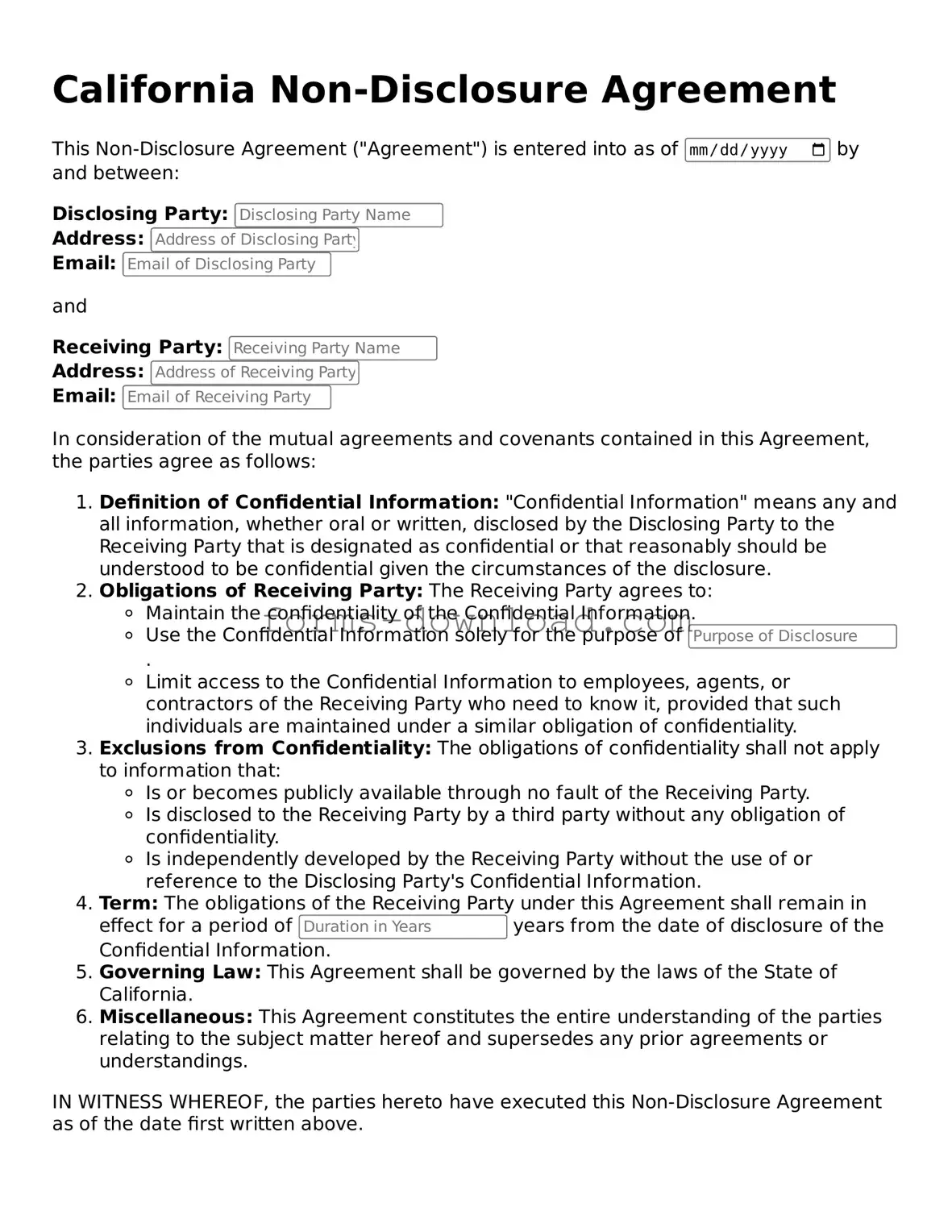Attorney-Approved Non-disclosure Agreement Document for the State of California
A California Non-Disclosure Agreement (NDA) is a legal contract designed to protect sensitive information shared between parties. By establishing clear boundaries regarding confidentiality, this form helps safeguard trade secrets, business plans, and other proprietary data. If you’re ready to protect your information, fill out the form by clicking the button below.
Launch Editor Now
